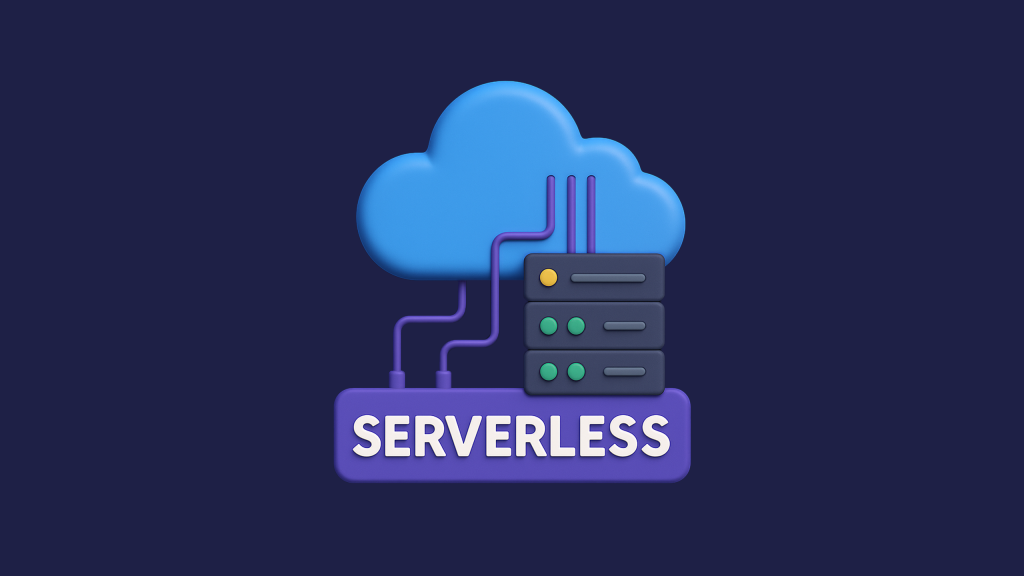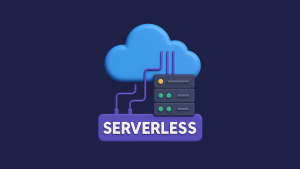Serverless architecture is changing the way modern applications are built by eliminating the need for infrastructure management. Unlike traditional models, where developers must provision, scale, and maintain servers, serverless allows them to focus entirely on writing code while AWS handles execution, scaling, and availability.
However, not all serverless implementations are truly serverless. Many teams unknowingly replicate traditional architectures, leading to vendor lock-in, performance bottlenecks, and unnecessary complexity.
If you want to truly leverage serverless computing, your applications must be event-driven, stateless, and loosely coupled, ensuring maximum scalability and efficiency.
What you'll learn
This guide will break down what makes a true serverless architecture, common mistakes to avoid, and best practices for building scalable, event-driven applications. We’ll also explore how to build a proper serverless API without Lambda and review real-world serverless implementations.
What is a true serverless architecture?
A true serverless architecture is not just a buzzword. It follows specific design principles that ensure scalability, efficiency, and cost optimization.
Many developers associate serverless with AWS Lambda, but a well-designed serverless system should be event-driven, stateless, and fully managed without relying on always-running compute instances.
A proper serverless architecture should have the following characteristics:
- Event-Driven Execution
Services should trigger automatically based on events (e.g., S3 uploads, database updates, API requests) rather than requiring a persistent server. - Loosely Coupled Components
Microservices should communicate asynchronously using event buses (AWS EventBridge), message queues (SQS), or Pub/Sub models instead of direct service-to-service calls. - No Server Management
Developers should never worry about provisioning, patching, or scaling infrastructure, the cloud provider handles everything. - Auto-Scaling and Pay-Per-Use
Compute resources should scale on demand, with costs incurred only when code is executed.
Common misconception
"Serverless means running functions in Lambda"
Actually, that's not enough. Instead, serverless should be built around native integrations, using services like API Gateway, DynamoDB, SQS, and Step Functions to handle workflows without unnecessary complexity.
As AWS expert Yan Cui points out in his discussion on microservices vs. serverless, these are orthogonal architectural styles— serverless is about leveraging cloud-native, event-driven services, not just breaking down applications into microservices.
A true serverless system minimizes dependencies and maximizes scalability by ensuring services are stateless, loosely coupled, and event-driven.
The right approach to event-driven architectures in serverless
A true serverless architecture is inherently event-driven, meaning that components should respond to triggers rather than relying on traditional request-response models.
Instead of making direct calls between services, a well-designed serverless system should use event-based communication to ensure scalability, resilience, and reduced coupling.
Why event-driven architecture is the right approach
In a monolithic or improperly designed serverless system, services communicate synchronously, meaning that each request waits for a response before proceeding. This creates performance bottlenecks, increased latency, and unnecessary dependencies between services.
A proper event-driven approach solves these issues by:
-
Enabling Asynchronous Processing
Instead of waiting for responses, services can trigger events and continue execution, improving efficiency. -
Reducing Service Dependencies
Microservices communicate via event buses (AWS EventBridge), message queues (SQS), or publish-subscribe models (SNS) instead of making direct API calls. -
Improving Scalability
Events can be processed independently, allowing for auto-scaling without affecting other parts of the system. -
Minimizing Failures
If a service is temporarily down, events remain in the queue and get processed later, ensuring fault tolerance.
How to implement an event-driven architecture in AWS
A proper serverless event-driven system should be designed around event sources and event consumers using AWS-native tools:
- Use Amazon SQS or SNS for Asynchronous Communication
Instead of making synchronous API calls, send messages to Amazon SQS (message queue) or SNS (publish-subscribe notifications) to trigger downstream services. - Leverage AWS EventBridge for Event Routing
Centralize event management by using EventBridge to connect microservices, Lambda functions, and third-party applications dynamically. - Replace Request-Response APIs with Event-Driven Workflows
Instead of exposing every service as an API endpoint, use Step Functions to orchestrate workflows, handling retries, failures, and complex decision-making.
A well-architected event-driven system eliminates unnecessary dependencies, reduces costs, and ensures high availability.
For a step-by-step guide on implementing event-driven architecture in AWS, including best practices for SQS, SNS, and EventBridge, check out our detailed deep dive on event-driven serverless architectures.
3 common mistakes in serverless architecture
(and how to fix them)
While serverless architecture simplifies infrastructure management, many teams unknowingly introduce performance bottlenecks, unnecessary costs, and vendor lock-in by following traditional development patterns.
1. Treating serverless like a traditional server-based app
One of the biggest mistakes is designing serverless applications as if they were running on traditional servers. This often results in long-running functions, excessive dependencies, and unnecessary state management.
-
How to fix it
Serverless applications should be stateless, event-driven, and loosely coupled. Instead of relying on long-running compute processes, use Step Functions for workflow orchestration and DynamoDB for state persistence.
True serverless design focuses on leveraging managed services and asynchronous event-driven architectures rather than just applying microservices principles.
2. Overusing AWS Lambda for everything
No doubt Lambda is powerful, but it’s not always the best choice. Many teams use Lambda when a direct integration would be more efficient, leading to unnecessary execution time and higher costs.
-
How to fix it
Follow AWS’s best practice of using direct integrations whenever possible. Instead of calling Lambda from API Gateway to write to S3, use the native API Gateway + S3 integration. Similarly, for database operations, connect the API Gateway directly to DynamoDB using VTL mapping templates, avoiding Lambda overhead.
3. Synchronous Communication Between Microservices
A common anti-pattern is having microservices communicate synchronously, making direct API calls to each other. This increases latency, dependency issues, and scalability challenges.
-
How to fix it
Adopt an event-driven architecture using SNS, SQS, or EventBridge to enable asynchronous communication. This improves scalability, resilience, and reduces the impact of failures.
Avoid these common pitfalls and your organization can build scalable, cost-effective, and highly efficient serverless apps.
Real-world event-driven serverless architecture
A well-designed serverless architecture eliminates unnecessary dependencies, ensures high scalability, and optimizes cost efficiency. Below is an example of how an event-driven serverless system can be implemented using AWS-native services.
Use Case: Processing and storing user-uploaded images
Imagine a web application where users upload images that need to be processed (resized, watermarked) and stored securely.
A traditional approach might involve a backend server handling uploads, processing images synchronously, and saving them in storage, but this would introduce scalability bottlenecks and higher costs.
A serverless, event-driven solution would look like this:
-
Image Uploads to S3 Trigger an Event
When a user uploads an image, Amazon S3 generates an event notification, which is sent to Amazon EventBridge or Amazon SQS. -
Lambda Function Processes the Image
The event triggers an AWS Lambda function, which resizes, watermarks, or optimizes the image before saving the processed file to another S3 bucket. -
Database Update and Notifications
Once processing is complete, another event is sent to Amazon DynamoDB to update the user’s record with the new image URL. Amazon SNS sends a notification to the user confirming the upload is complete.
Why this works
✓ It's fully event-driven. No servers are running 24/7
✓ It scales automatically, with 100s or 1000s of concurrent uploads & no loss in performance
✓ It's cost-effective. There’s no need to pay for idle servers (resources are only used when needed)
Conclusion
A well-designed serverless architecture enables businesses to build highly scalable, cost-efficient, and resilient applications without the burden of server management. However, simply using AWS Lambda does not make an application truly serverless—it requires an event-driven approach, asynchronous communication, and native cloud integrations to achieve the full benefits.
Whether you’re building serverless APIs, real-time data processing pipelines, or cloud automation workflows, following best practices for serverless architecture ensures a robust and future-proof system.
FAQ about serverless architecture
Is serverless the same as microservices?
No, serverless and microservices are different architectural styles. Microservices focus on breaking applications into smaller, independent services, while serverless focuses on eliminating infrastructure management through cloud-managed services. However, they can be combined, with microservices running in a serverless environment for maximum scalability and efficiency.
Do I always need AWS Lambda for a serverless architecture?
No, AWS Lambda is a key serverless computing option, but many AWS services can function serverlessly without Lambda. For example, API Gateway can integrate directly with DynamoDB, S3, or EventBridge without needing Lambda as an intermediary, improving performance and reducing costs.
What are the main cost benefits of serverless architecture?
Serverless follows a pay-as-you-go model, meaning you only pay for execution time rather than pre-provisioned infrastructure. This reduces idle costs, automatically scales with demand, and eliminates the need for infrastructure maintenance, making it cost-efficient for workloads with unpredictable traffic.
What is the biggest challenge when adopting serverless architecture?
The biggest challenge is architecting for stateless, event-driven workflows. Many teams fall into traditional synchronous patterns instead of leveraging queues, event buses, and asynchronous processing. Understanding how to properly design event-driven architectures is key to avoiding performance bottlenecks.
How can I monitor and debug serverless applications?
AWS provides CloudWatch for logging, X-Ray for tracing, and Security Hub for compliance monitoring. Since serverless applications don’t have persistent servers, monitoring tools must track execution flow across multiple services, making observability crucial for troubleshooting and optimization.







